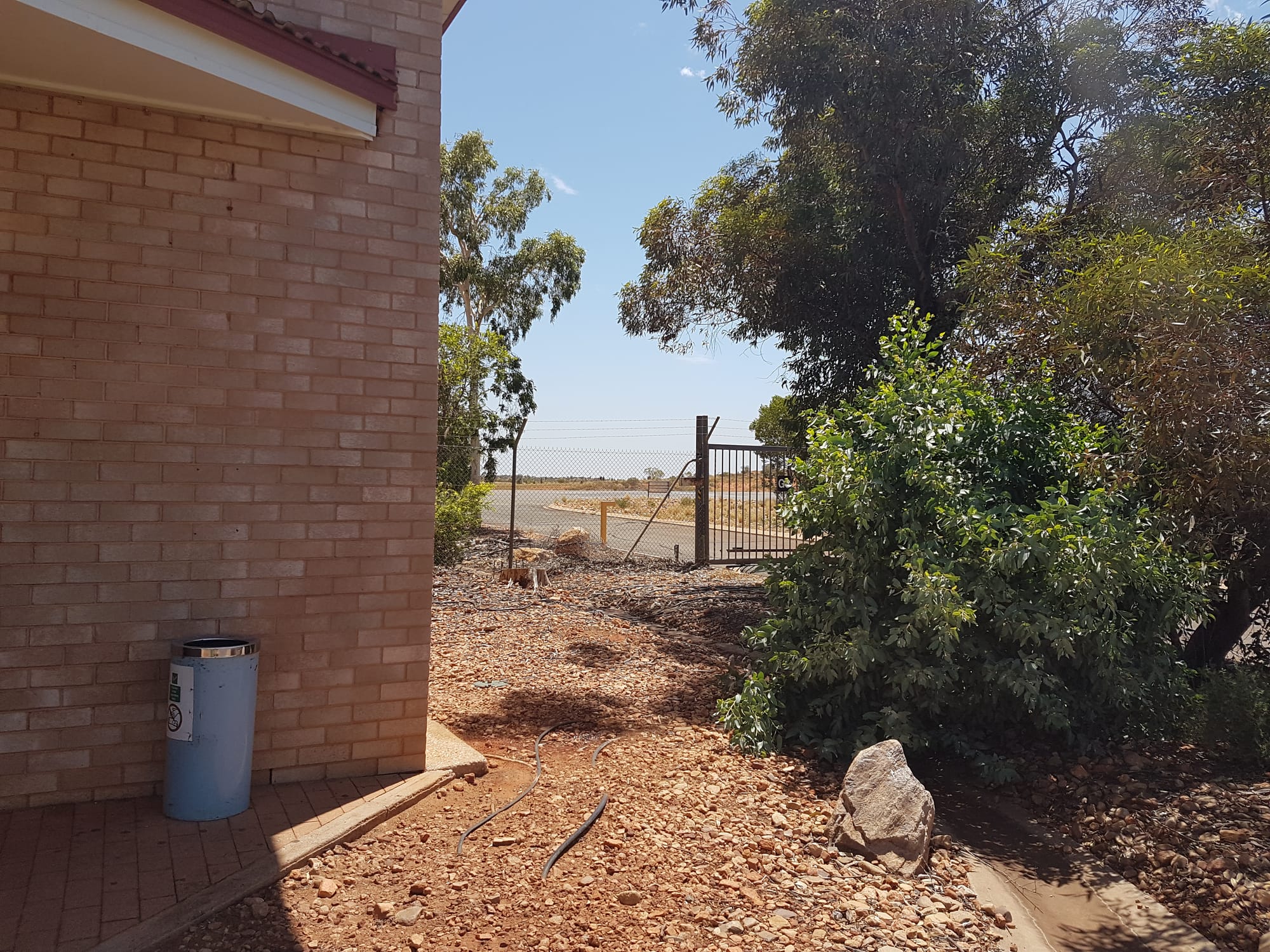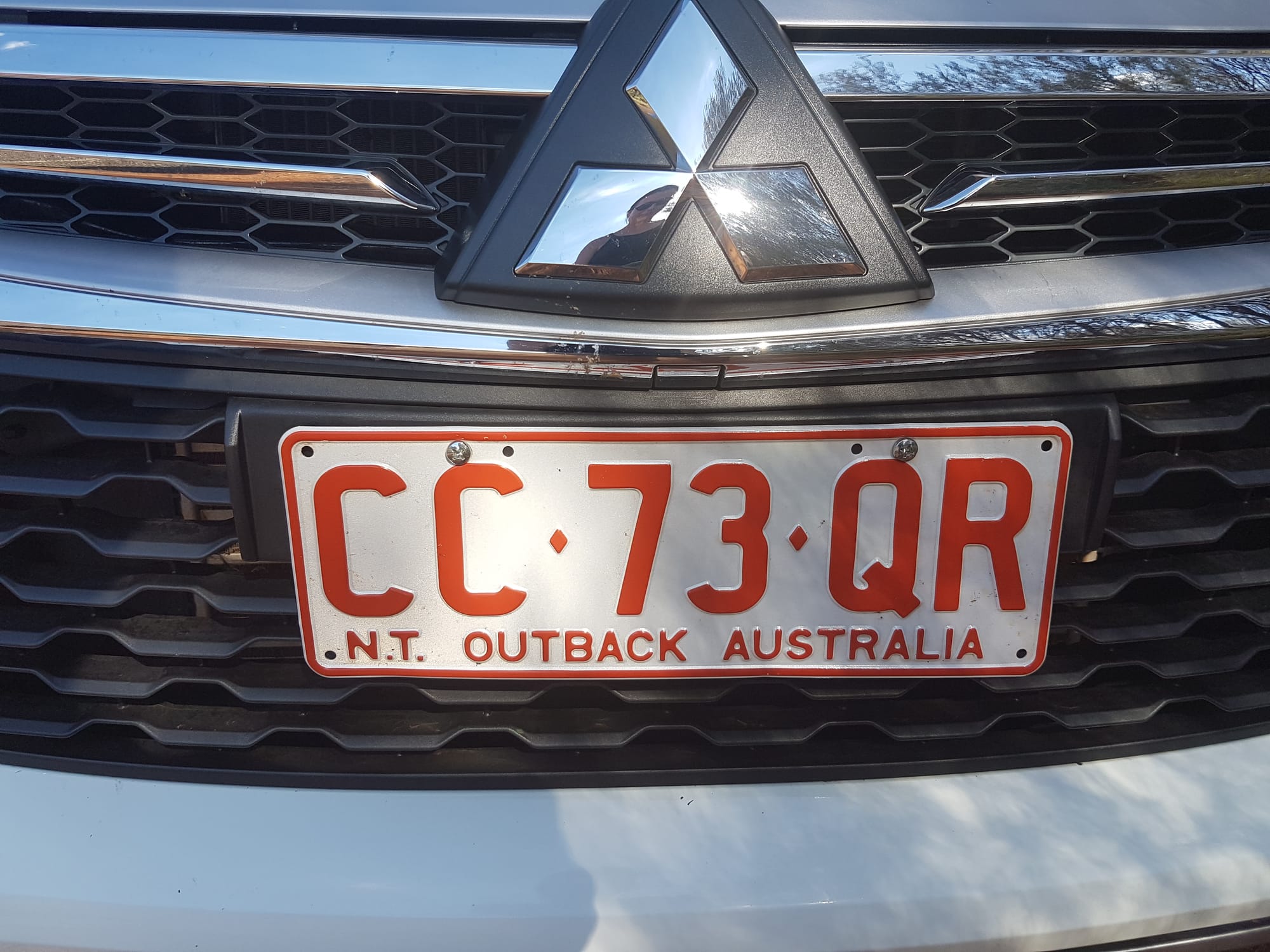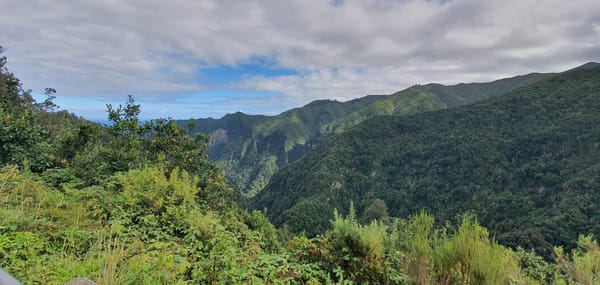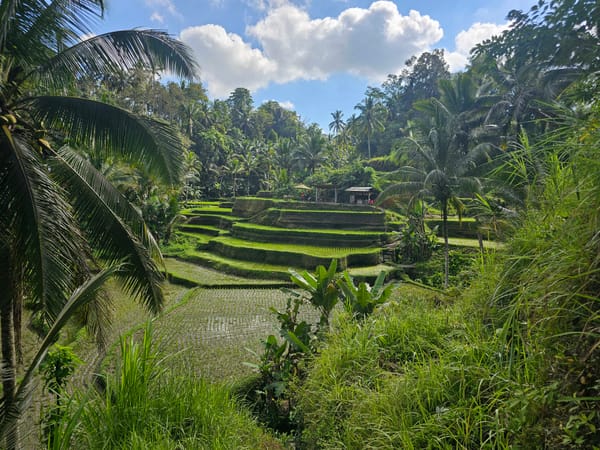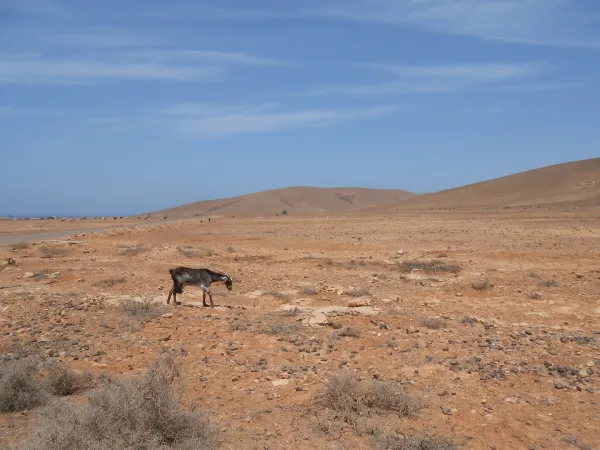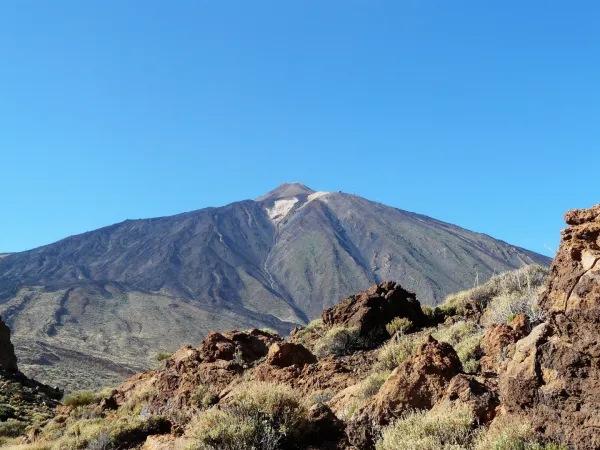Uluru
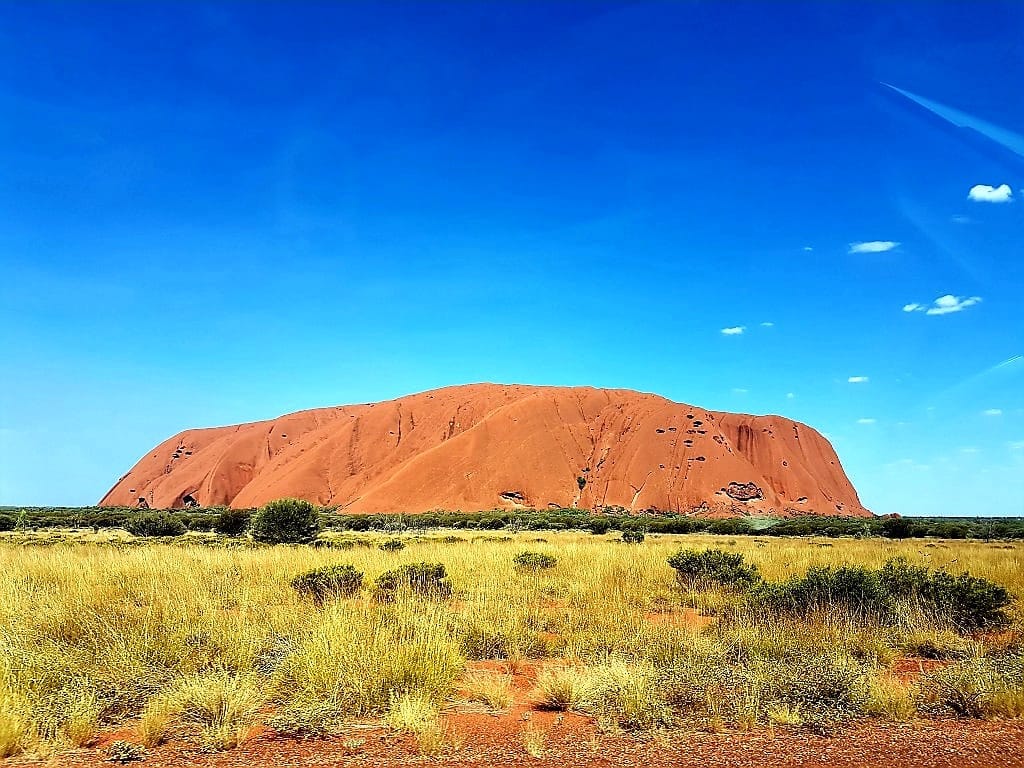
This two-day trip was part of our journey along Australia's South East Coast.
If you have any doubts about the uniqueness of this place, just wait until you get there — it's truly unbelievable. But before even considering a visit to Uluru, take the time to learn about the Aboriginal peoples of Australia as they are the most prescious human beings on Earth.
Aboriginal Australians represent the oldest known continuous civilization, with ancestral roots going back approximately 75,000 years. They are believed to have migrated to Northern Australia from Asia using primitive boats.
“When British settlers began colonizing Australia in 1788, between 750,000 and 1.25 Aboriginal Australians are estimated to have lived there. Soon, epidemics ravaged the island’s indigenous people, and British settlers seized Aboriginal lands. Though some Aboriginal Australians did resist—up to 20,000 indigenous people died in violent conflict on the colony’s frontiers—most were subjugated by massacres and the impoverishment of their communities as British settlers seized their lands.
Between 1910 and 1970, government policies of assimilation led to between 10 and 33 percent of Aboriginal Australian children being forcibly removed from their homes. These “Stolen Generations” were put in adoptive families and institutions and forbidden from speaking their native languages. Their names were often changed.
In 2008, Australian Prime Minister Kevin Rudd issued a national apology for the country’s actions toward Aboriginal Australians of the Stolen Generations; since then, Australia has worked to reduce social disparities between Aboriginal Australians and non-indigenous Australians.
Only in 1967 did Australians vote that federal laws also would apply to Aboriginal Australians. Most Aboriginal Australians did not have full citizenship or voting rights until 1965.
Today, about three percent of Australia’s population has Aboriginal heritage. Aboriginal Australians still struggle to retain their ancient culture and fight for recognition—and restitution—from the Australian government.” https://www.nationalgeographic.co.uk/2019/02/aboriginal-australians
“Aboriginal people have lived in the area around Uluru and Kata Tjuta for at least 30,000 years.
For Anangu (Aboriginal people who live around Uluru and Kata Tjuta), their culture has always existed here. The Central Australian landscape (of which Uluru and Kata Tjuta are an important part) is believed to have been created at the beginning of time by ancestral beings.
Uluru and Kata Tjuta provide physical evidence of feats performed during the creation period, which are told in the Tjukurpa stories.
Anangu believe they are the direct descendants of these beings and are responsible for the protection and appropriate management of these ancestral lands.”
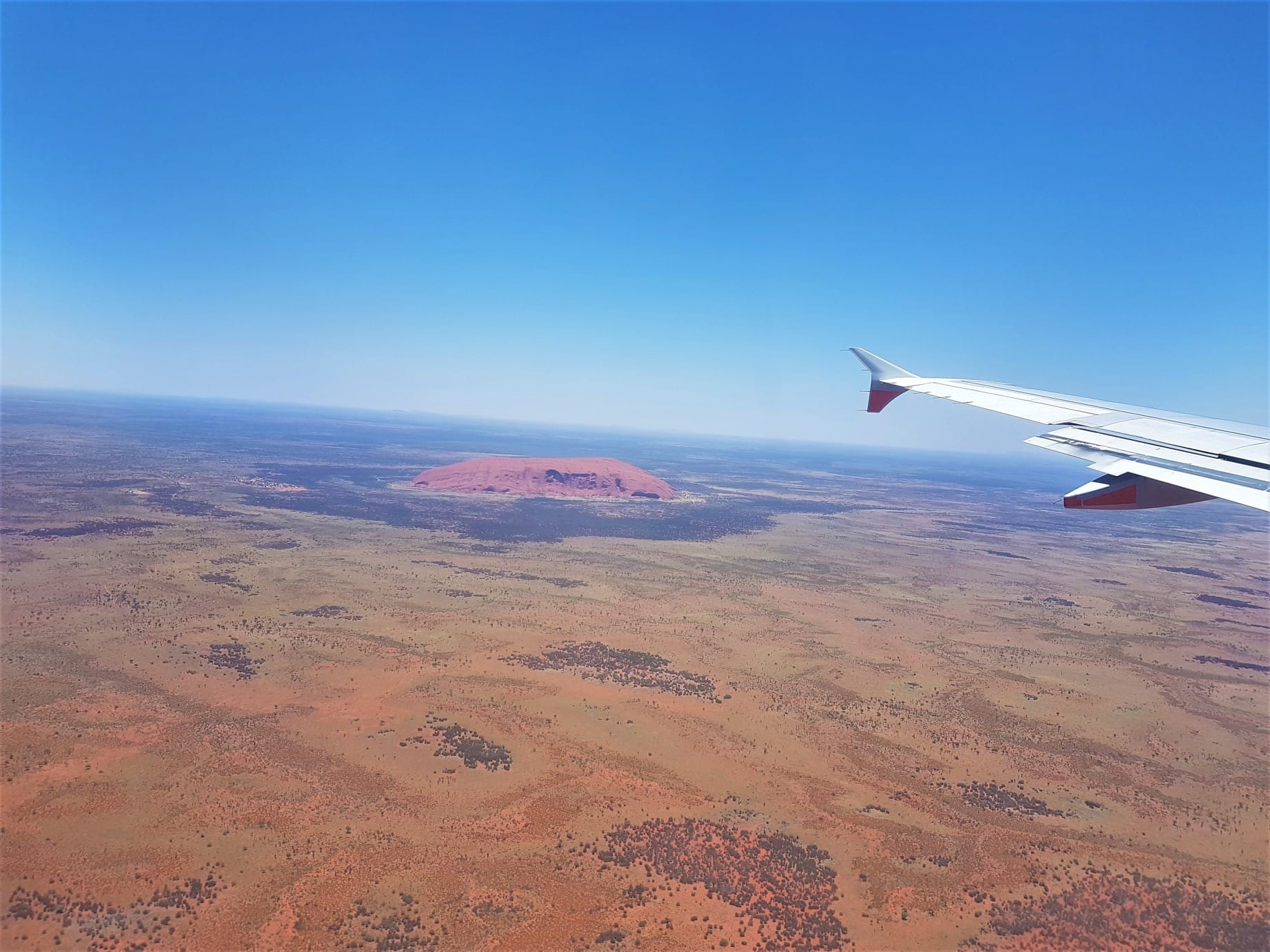
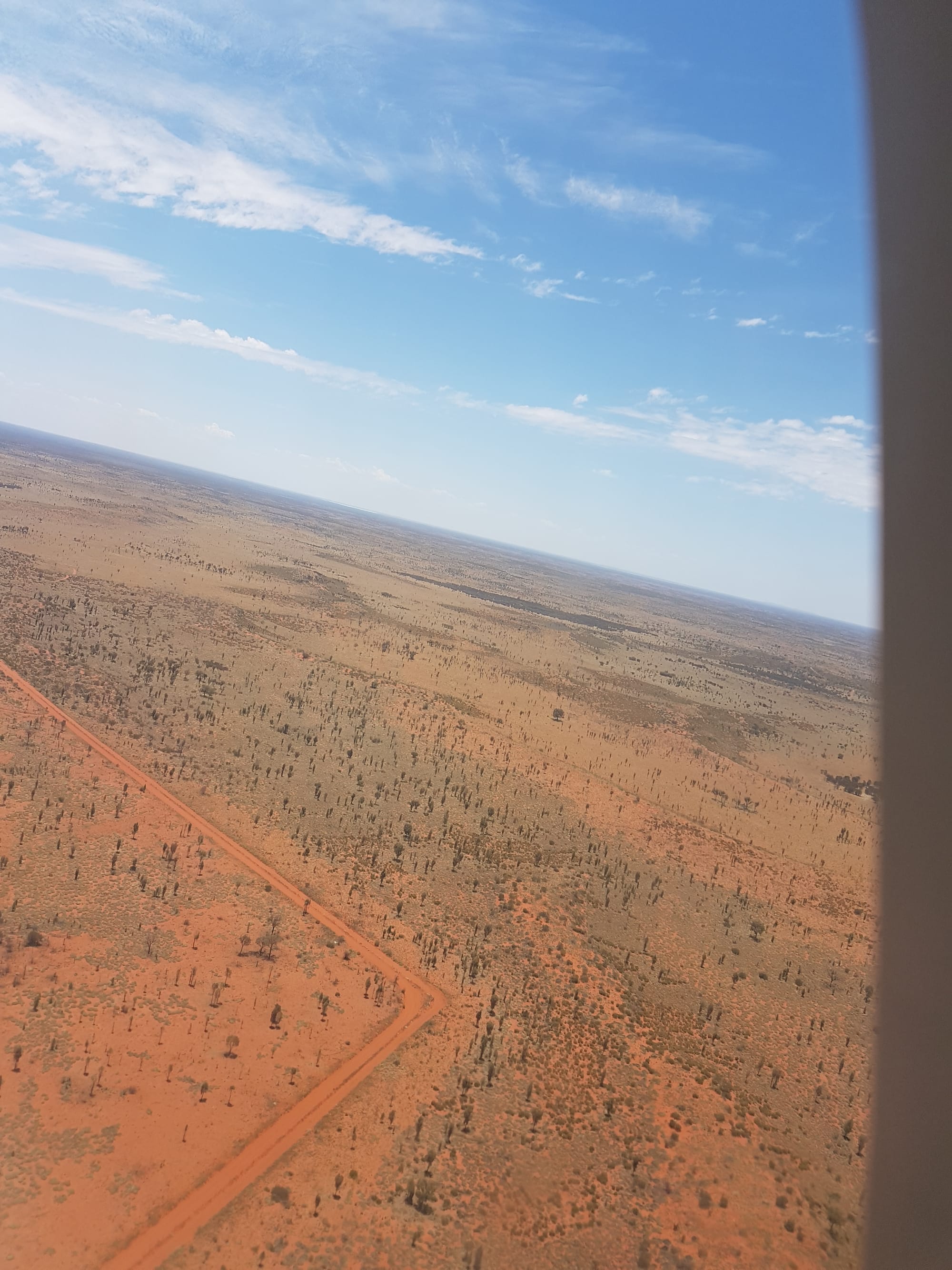

flight from Sydney T2 to Ayers Rock Airport
We spent around an hour to get a car rented from Herz, as a kind of compensation for the time spent at the desk we got Mitsibushi Outlander with a few km on the clock – I guess it’s quite difficult to add a mileage there as from the airport to Uluru is roughly 27km and about 30km from Uluru to Kata Tjuta.
Our first stop was Yulara, a small town with a few shops, a fuel station, and a small supermarket. For a coffee or something to eat, I recommend the Kulata Academy Café in the town square. It’s run as part of the National Indigenous Training Academy, helping local trainees kickstart careers in hospitality — a great place with a great purpose. If you’re looking to buy a souvenir, it's best to visit the Uluru-Kata Tjuta Cultural Centre and Ininti Café and Souvenirs. Every dollar spent there supports the local Indigenous community.
Uluru-Kata Tjuta National Park website: https://parksaustralia.gov.au/uluru/
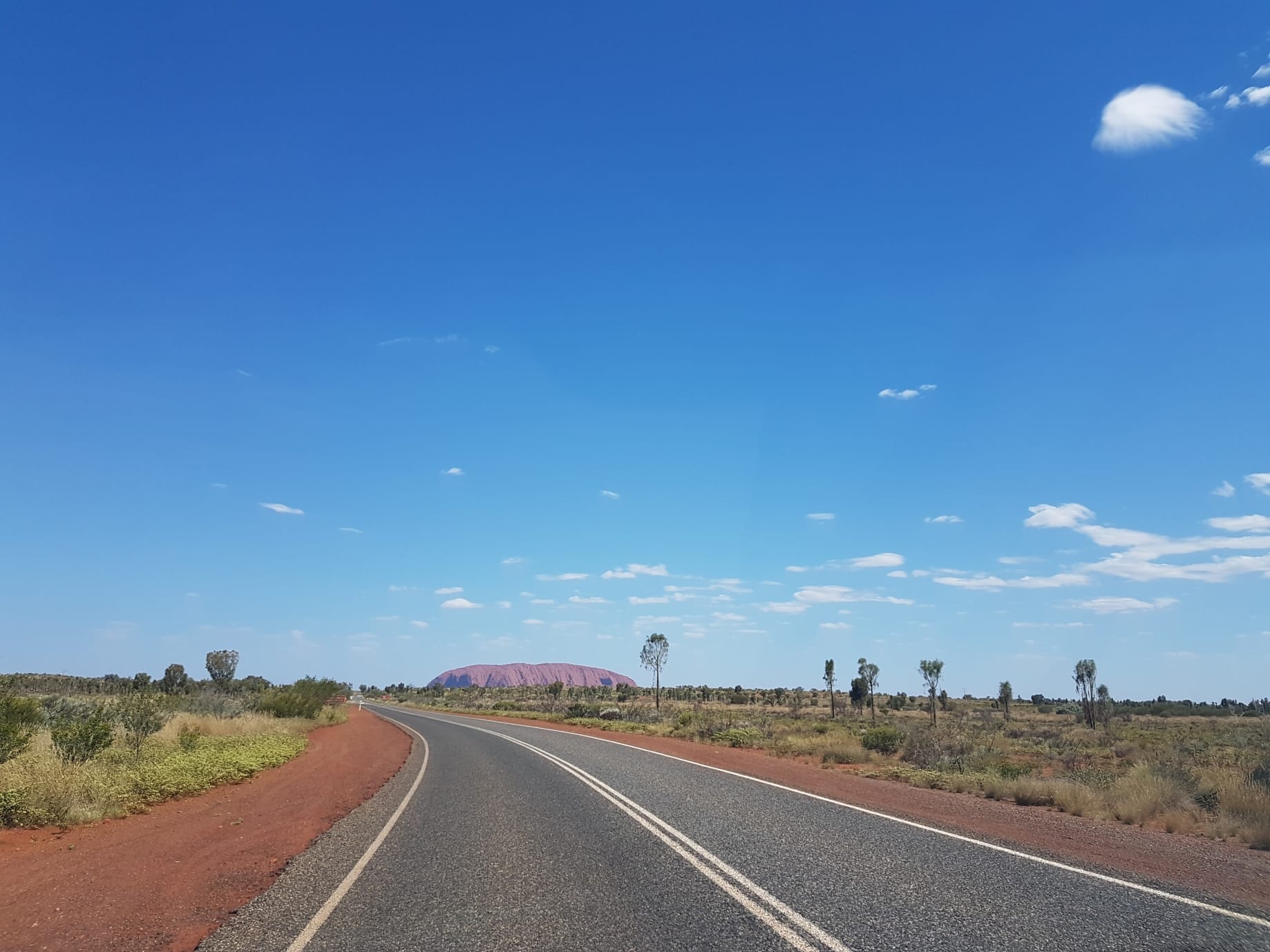

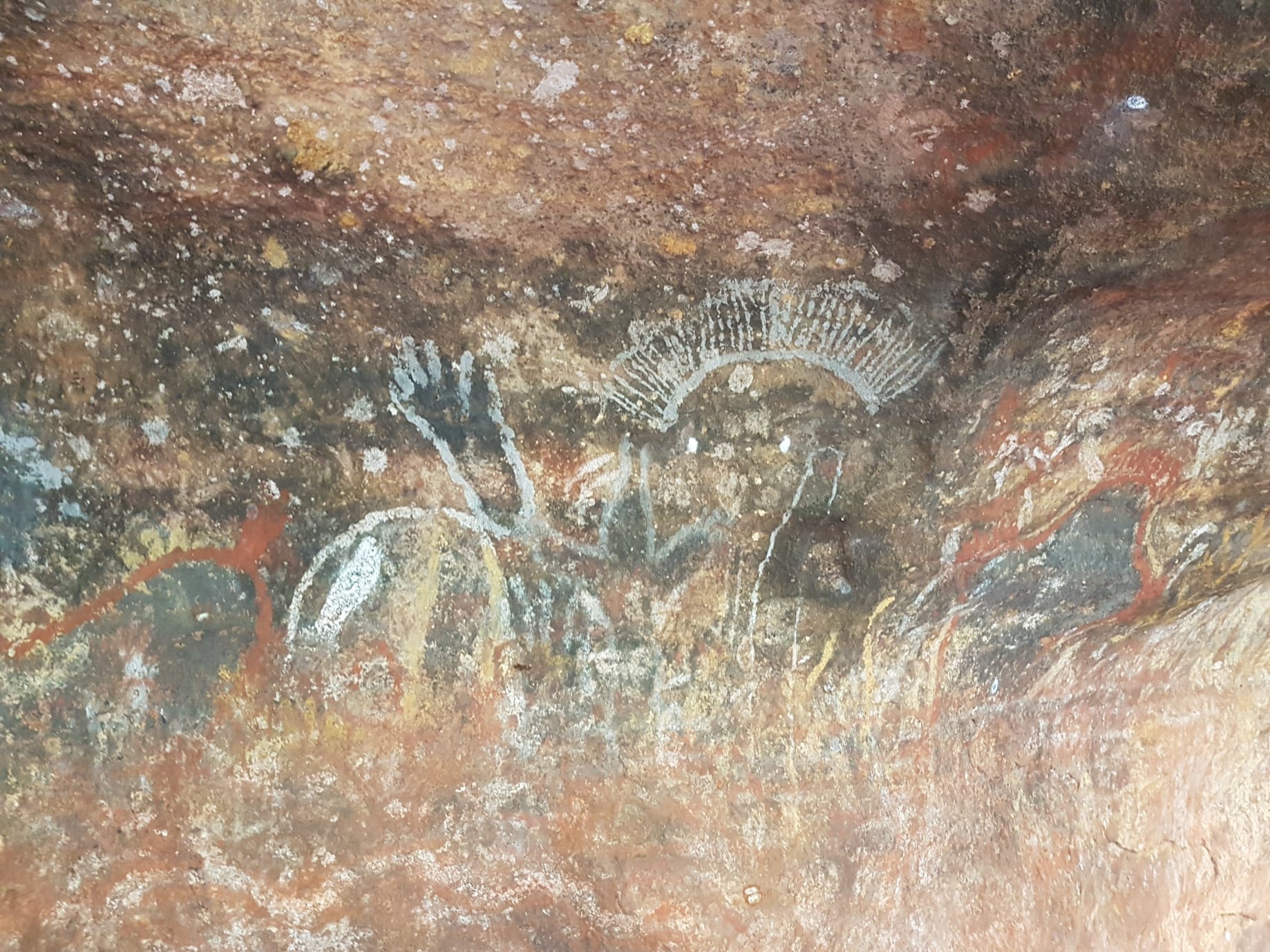
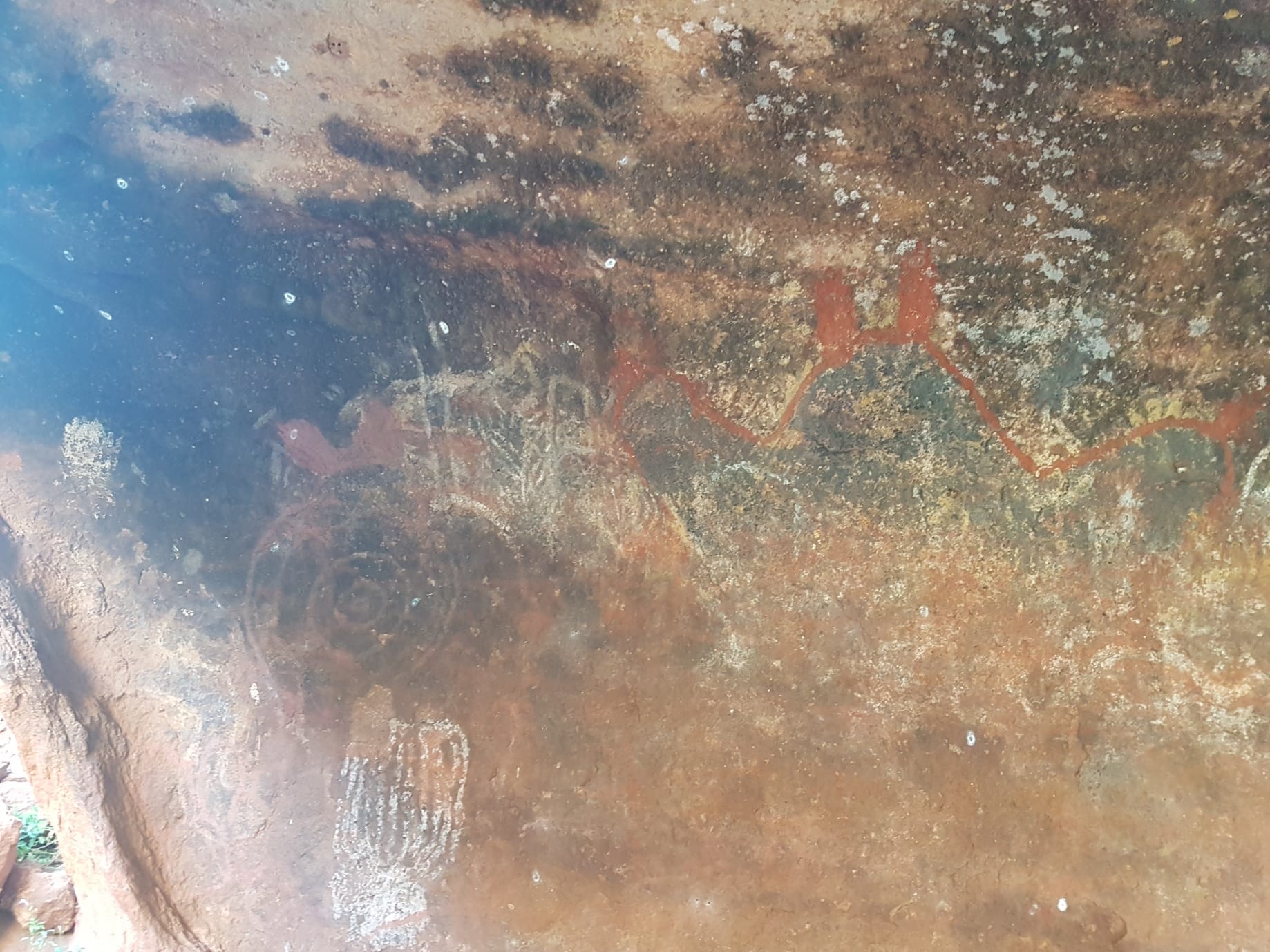
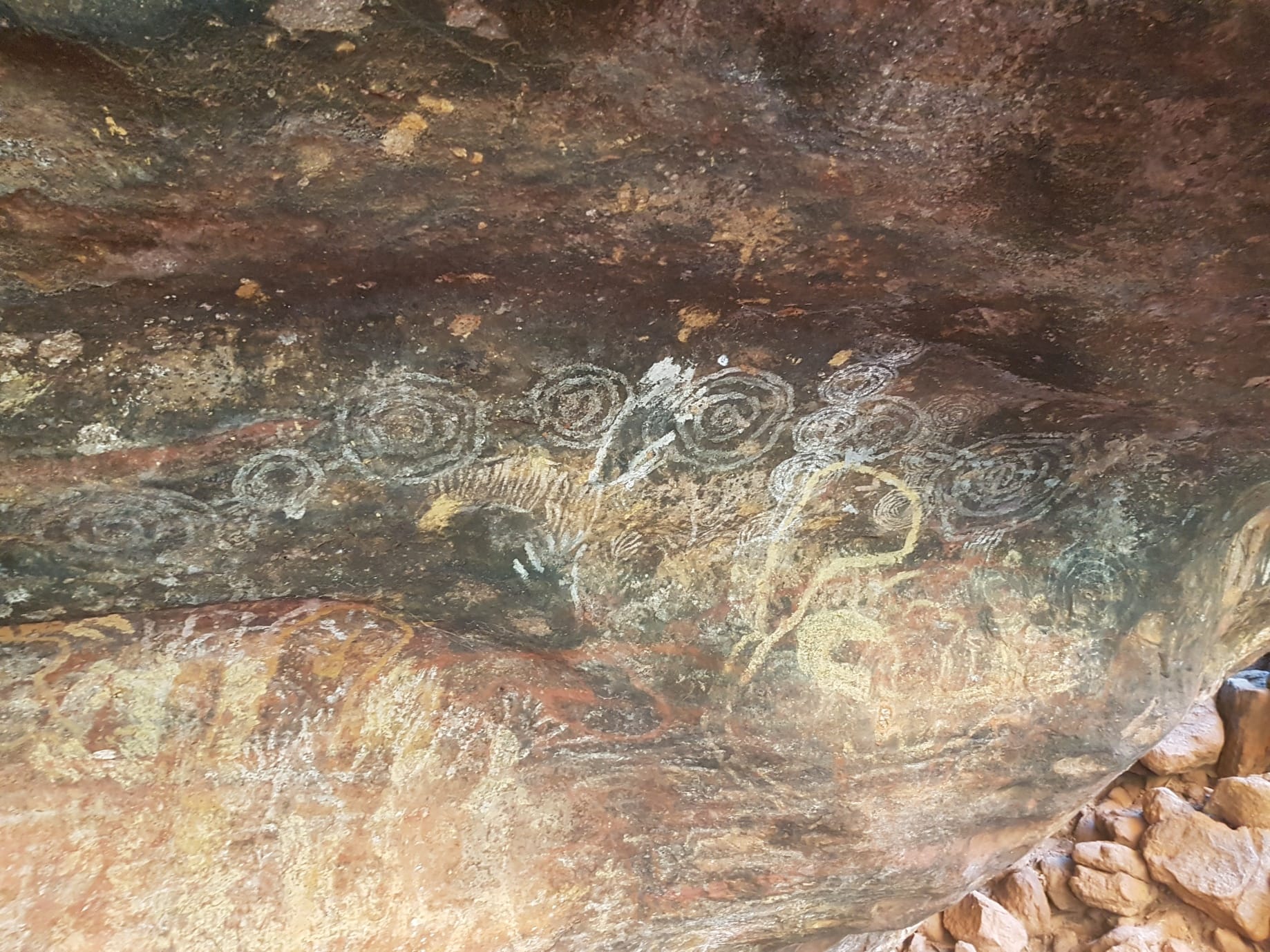
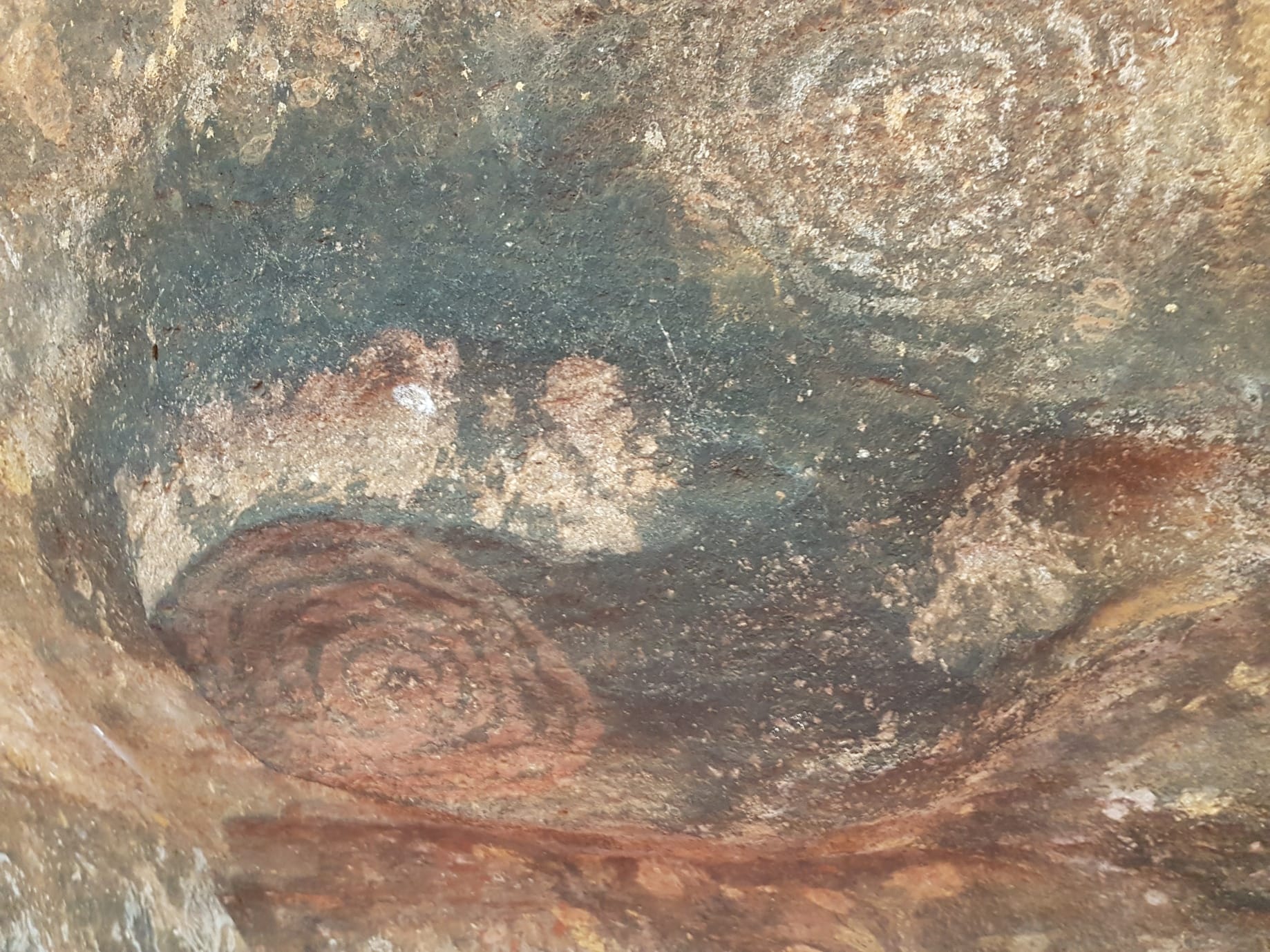
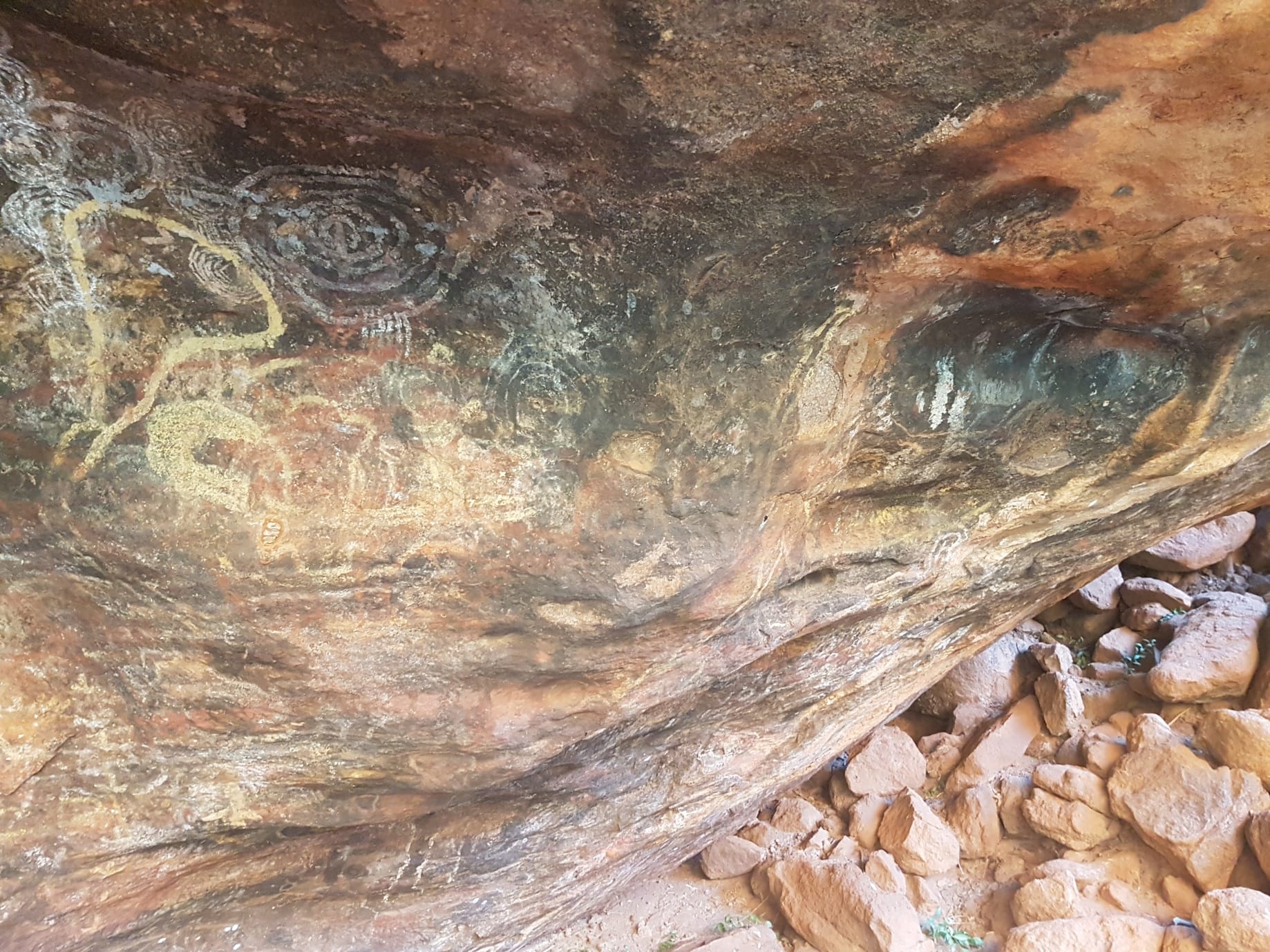
Kulpi Mutitjulu on the way to Waterhole
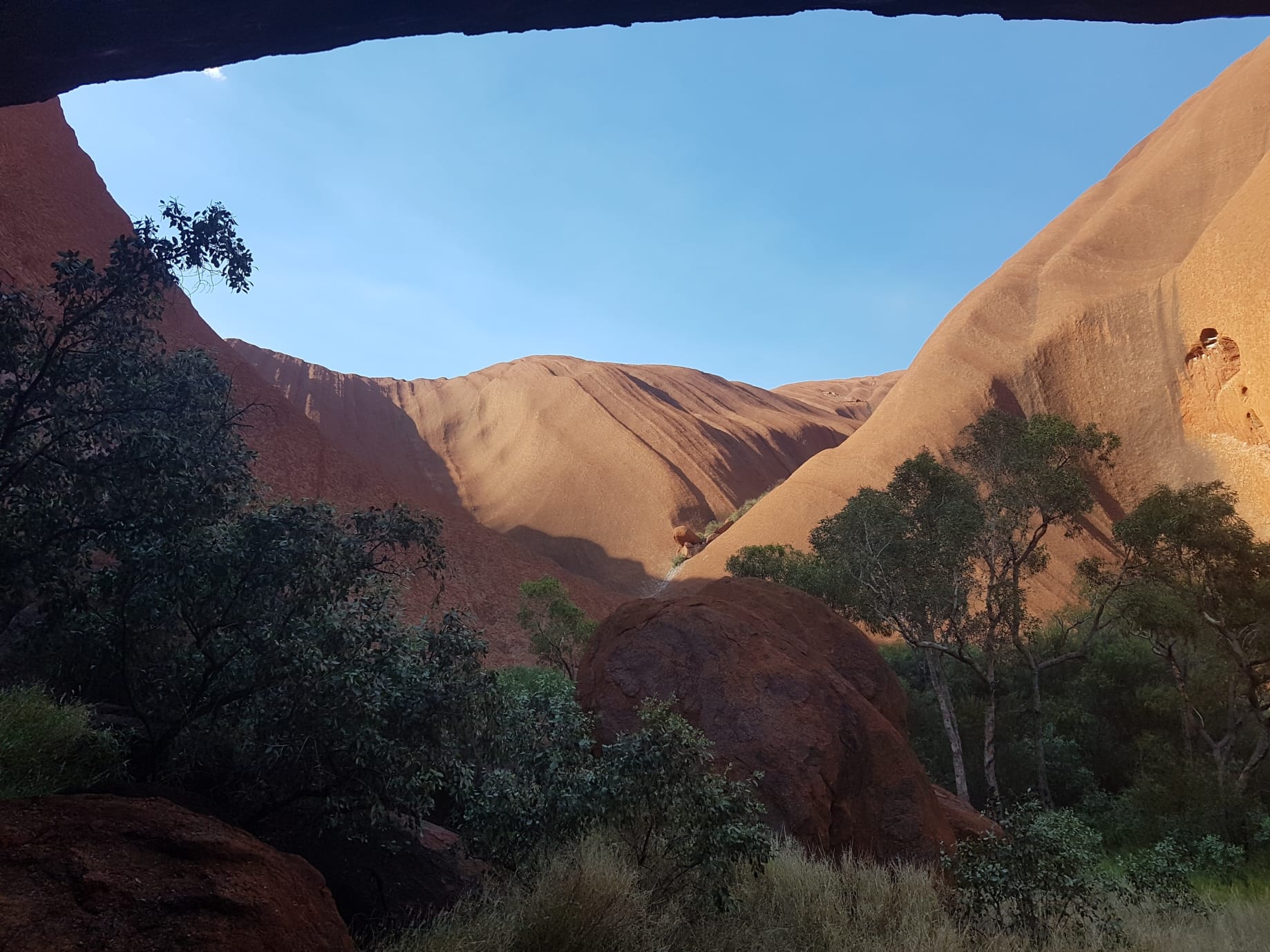
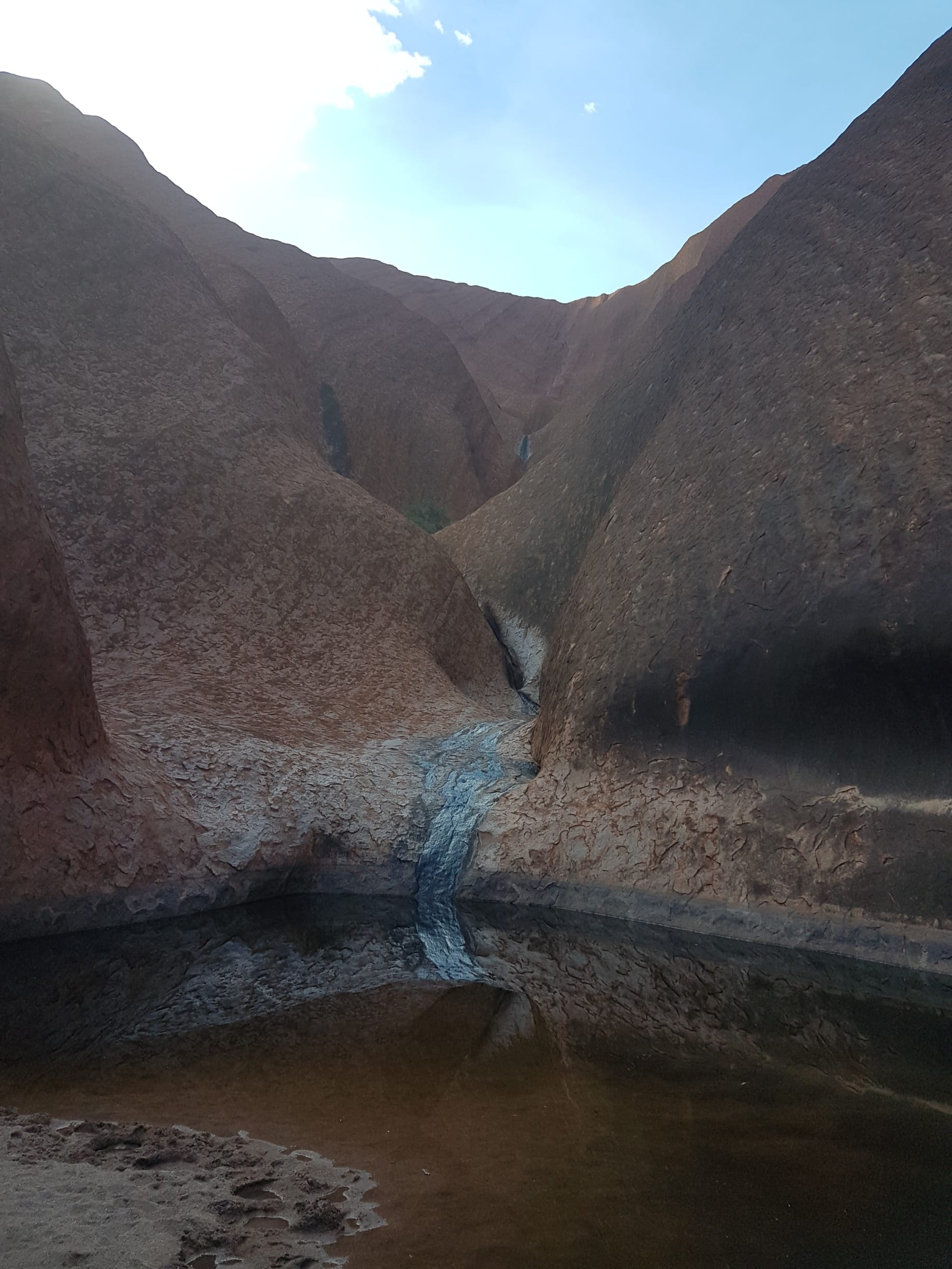
The rock seems to be completly smooth
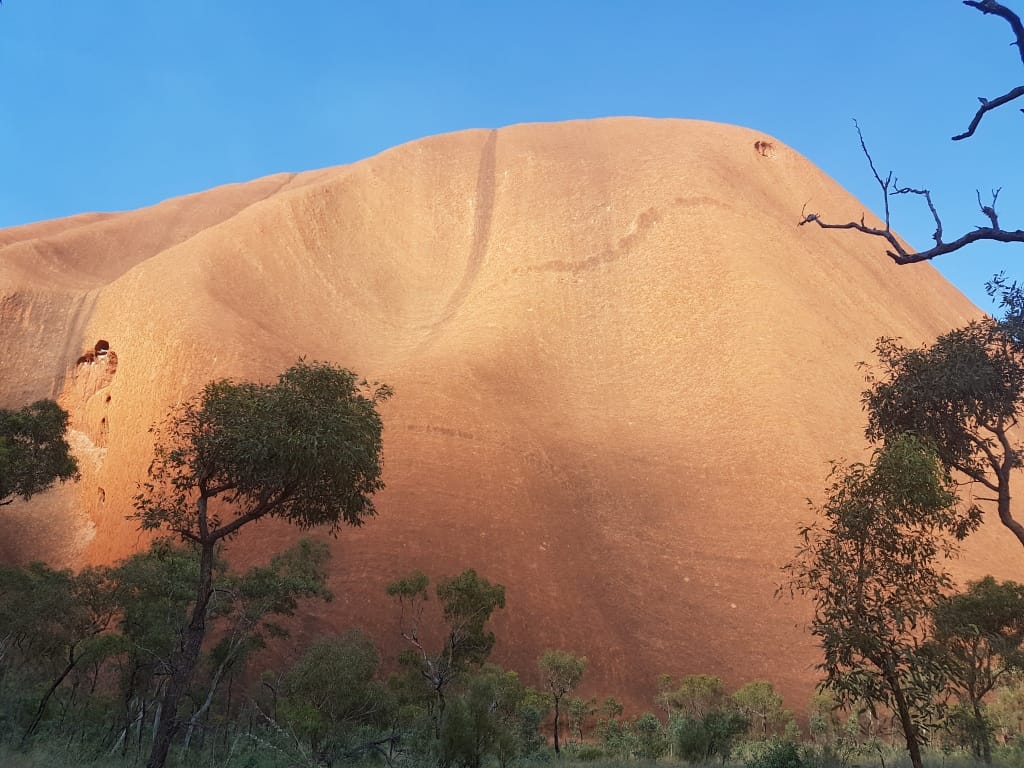
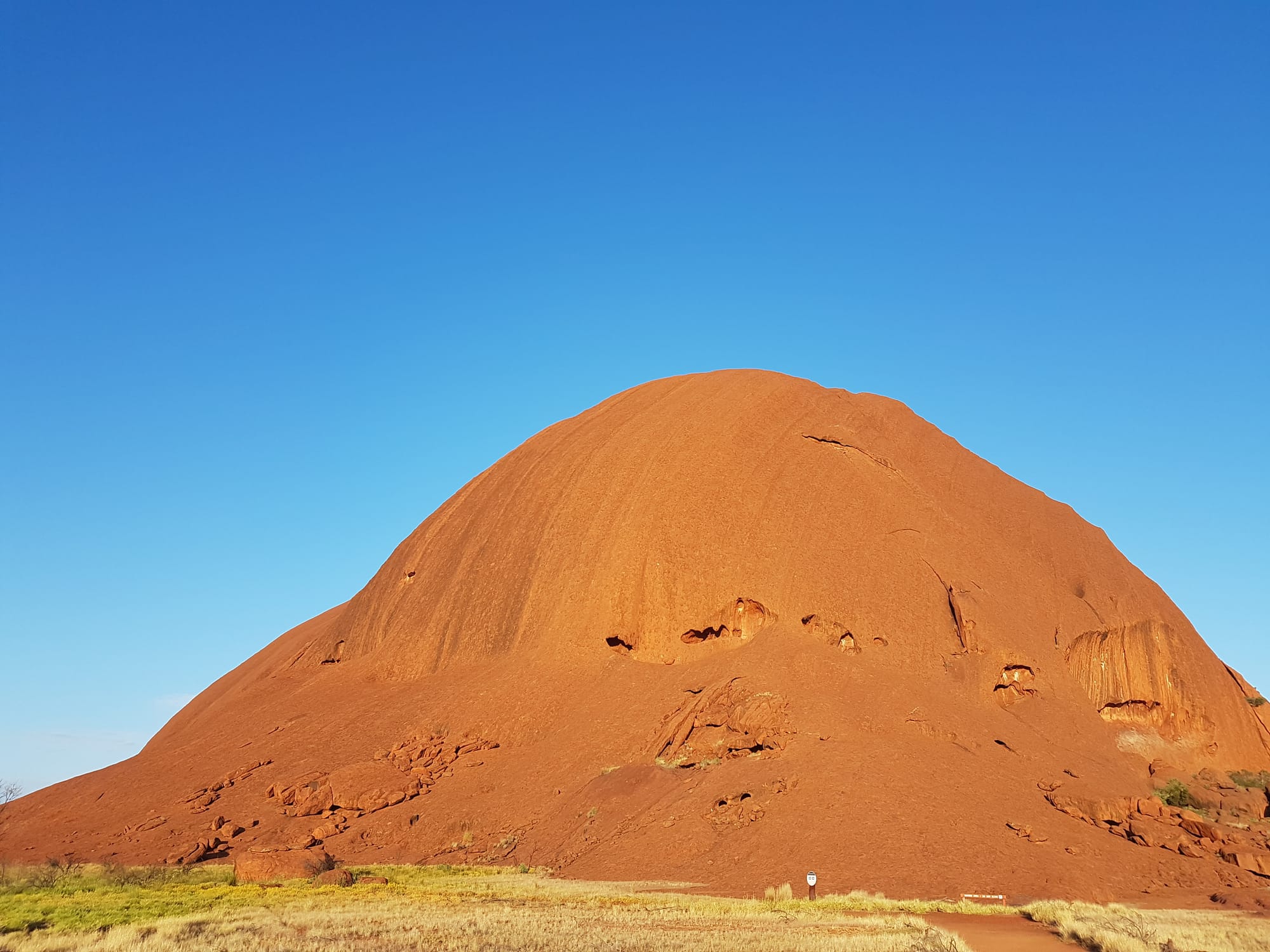
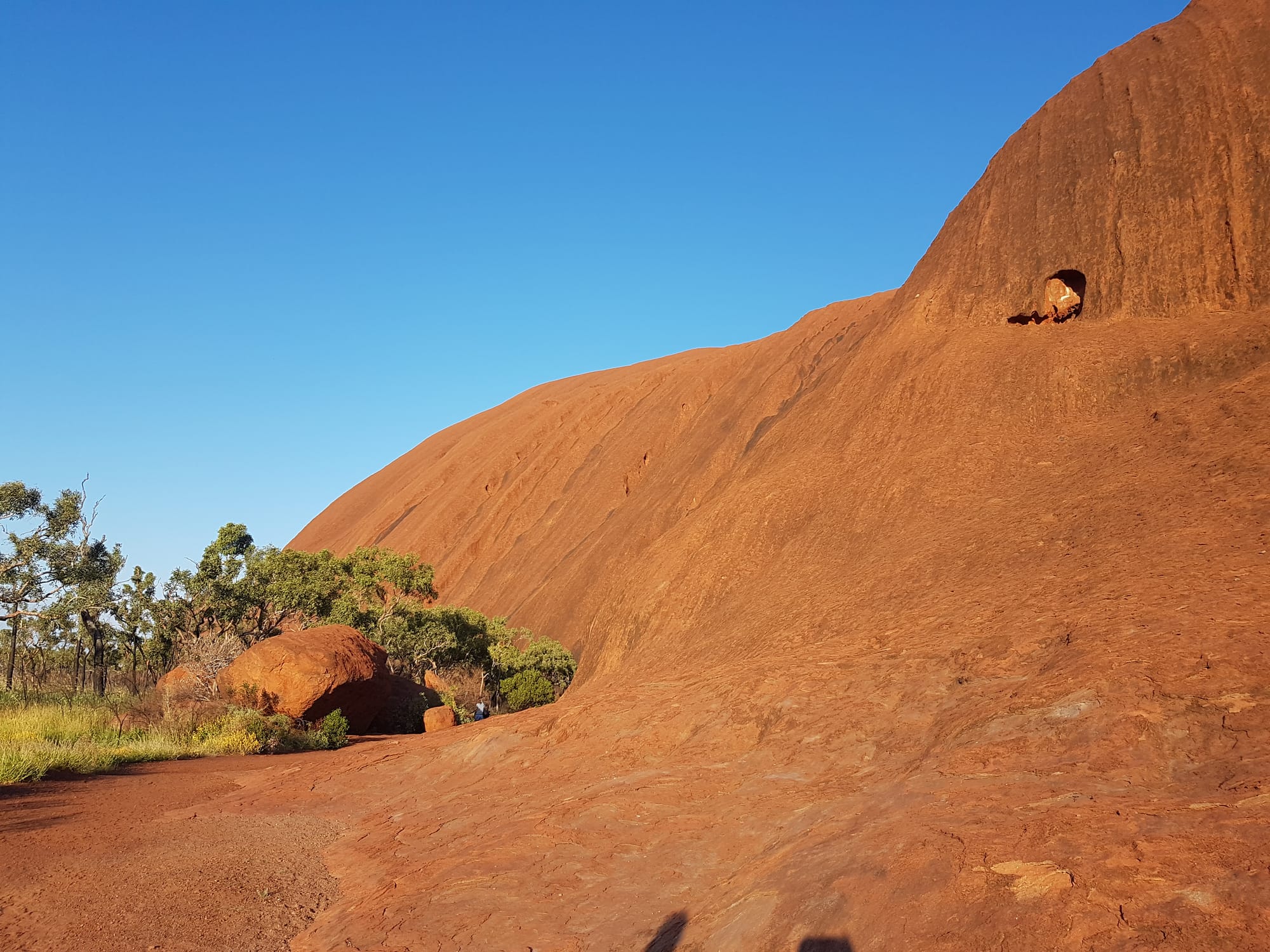
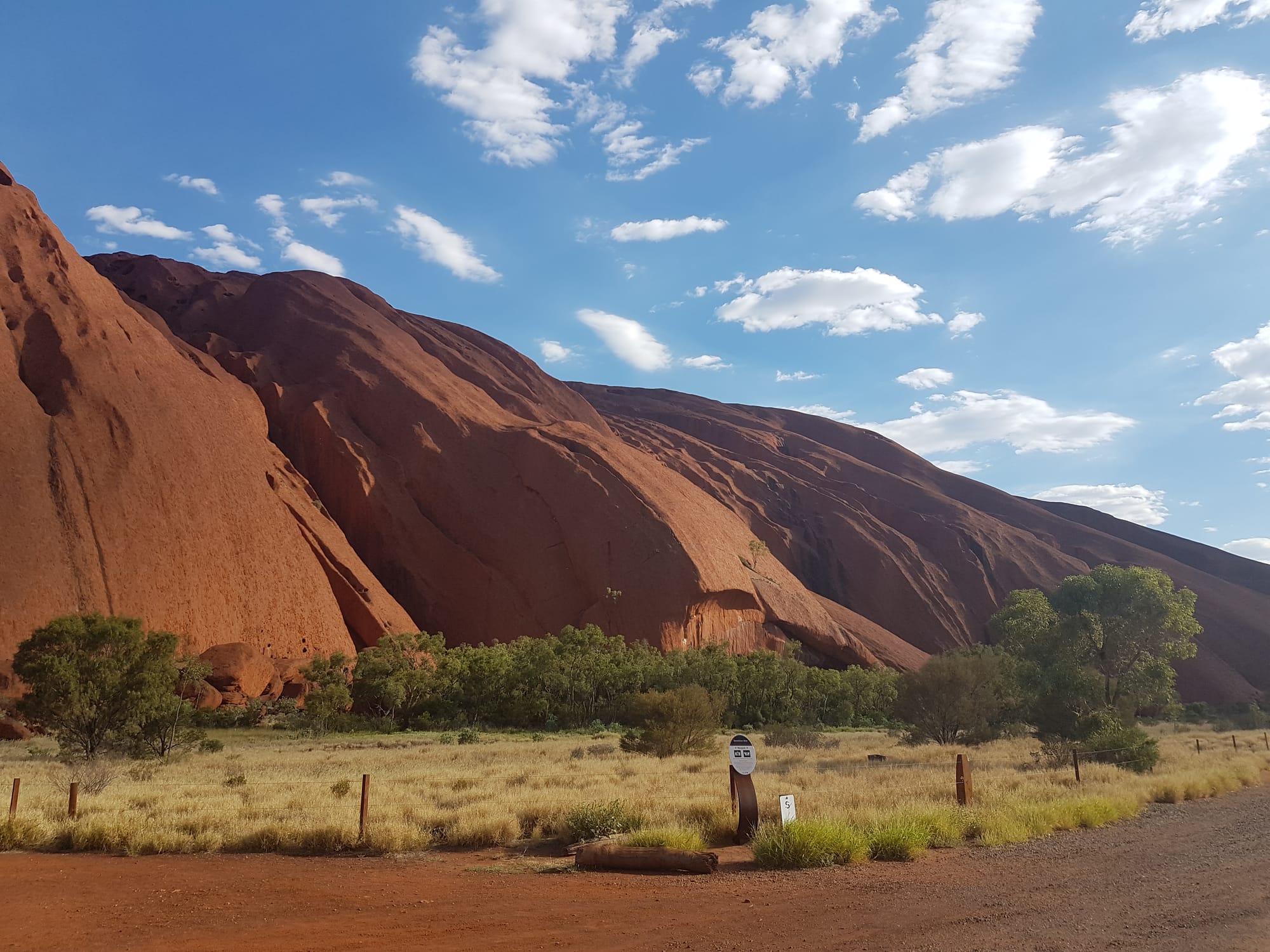
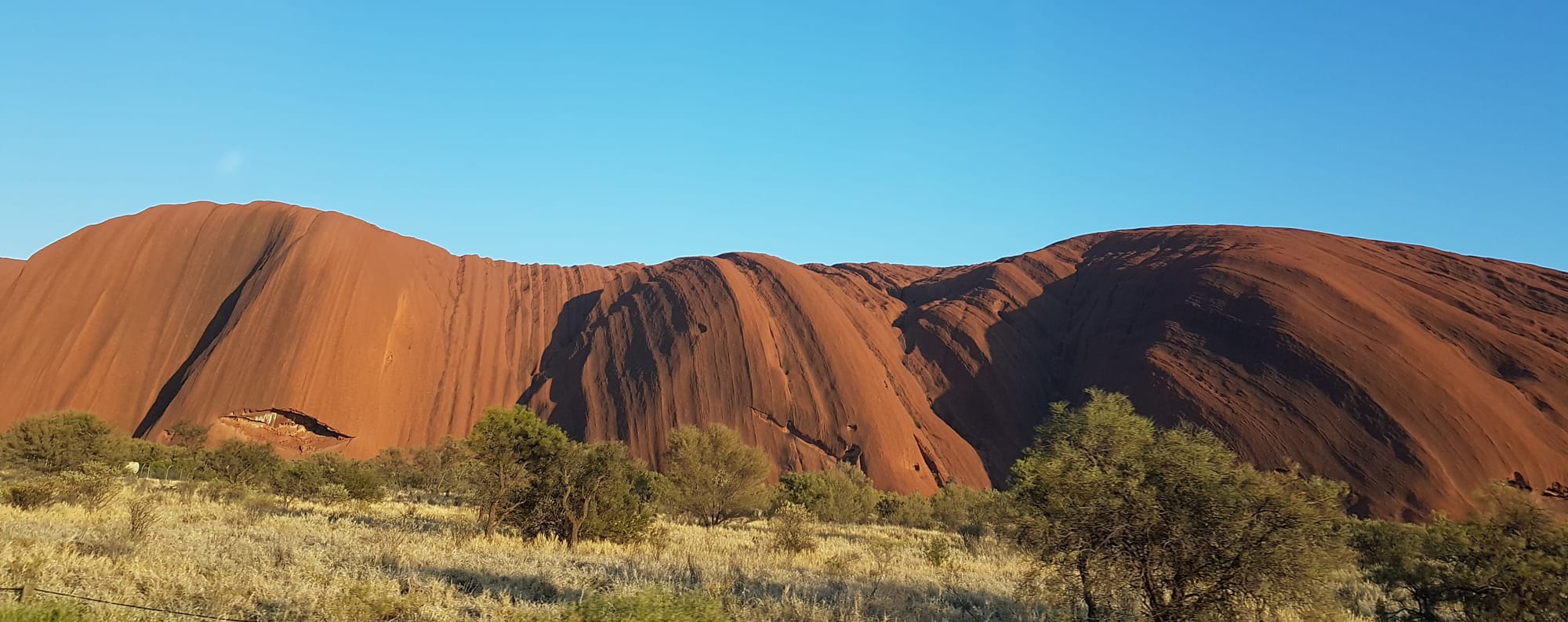
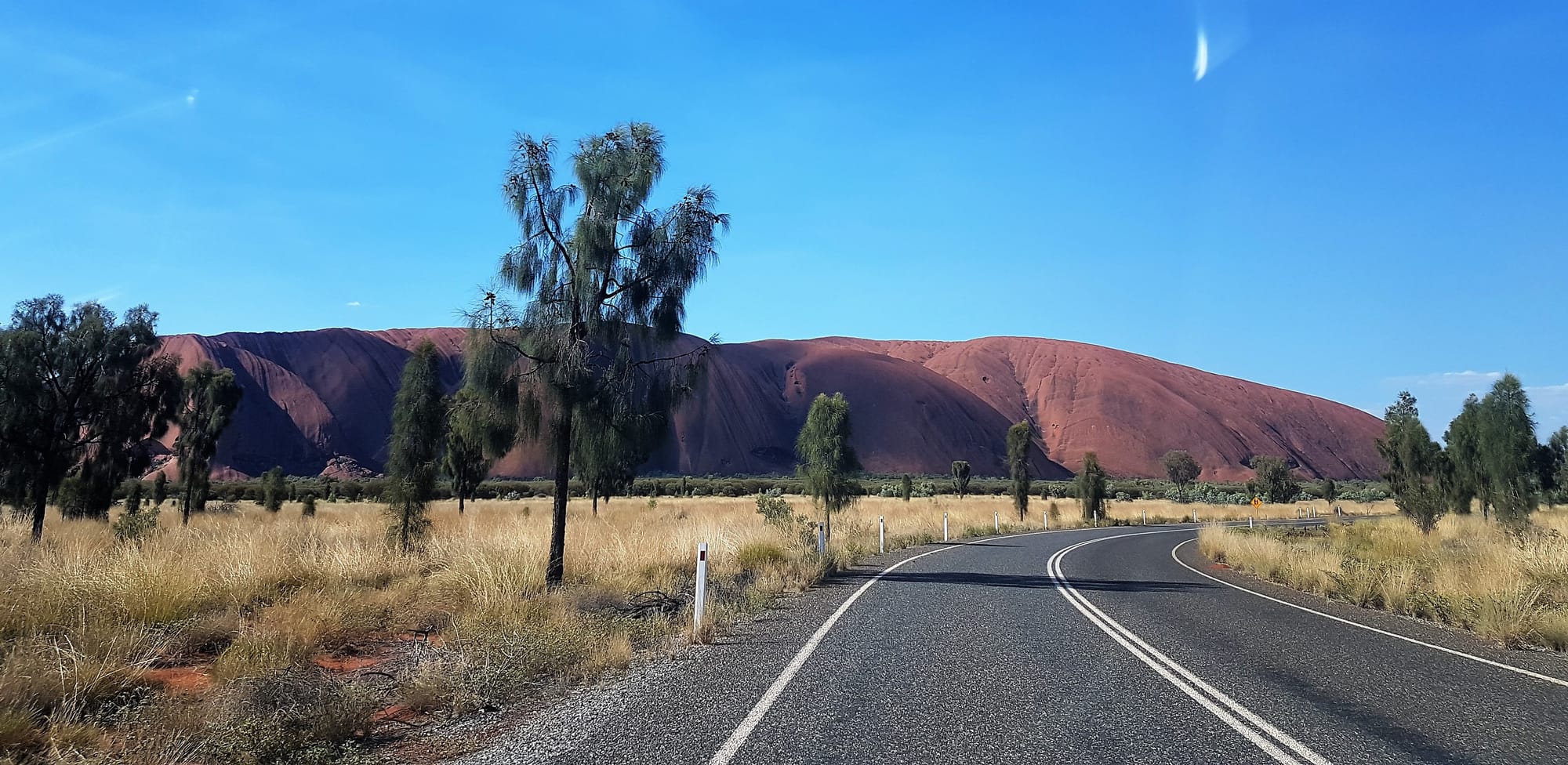
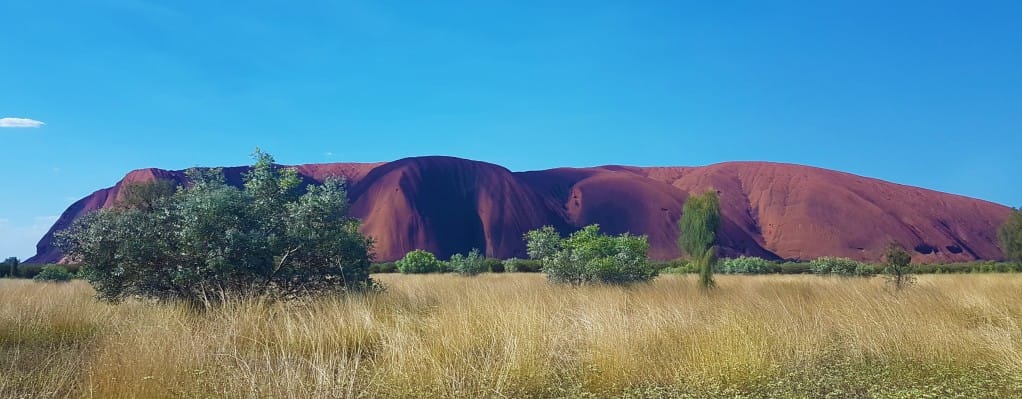
Kata Tjuta domes
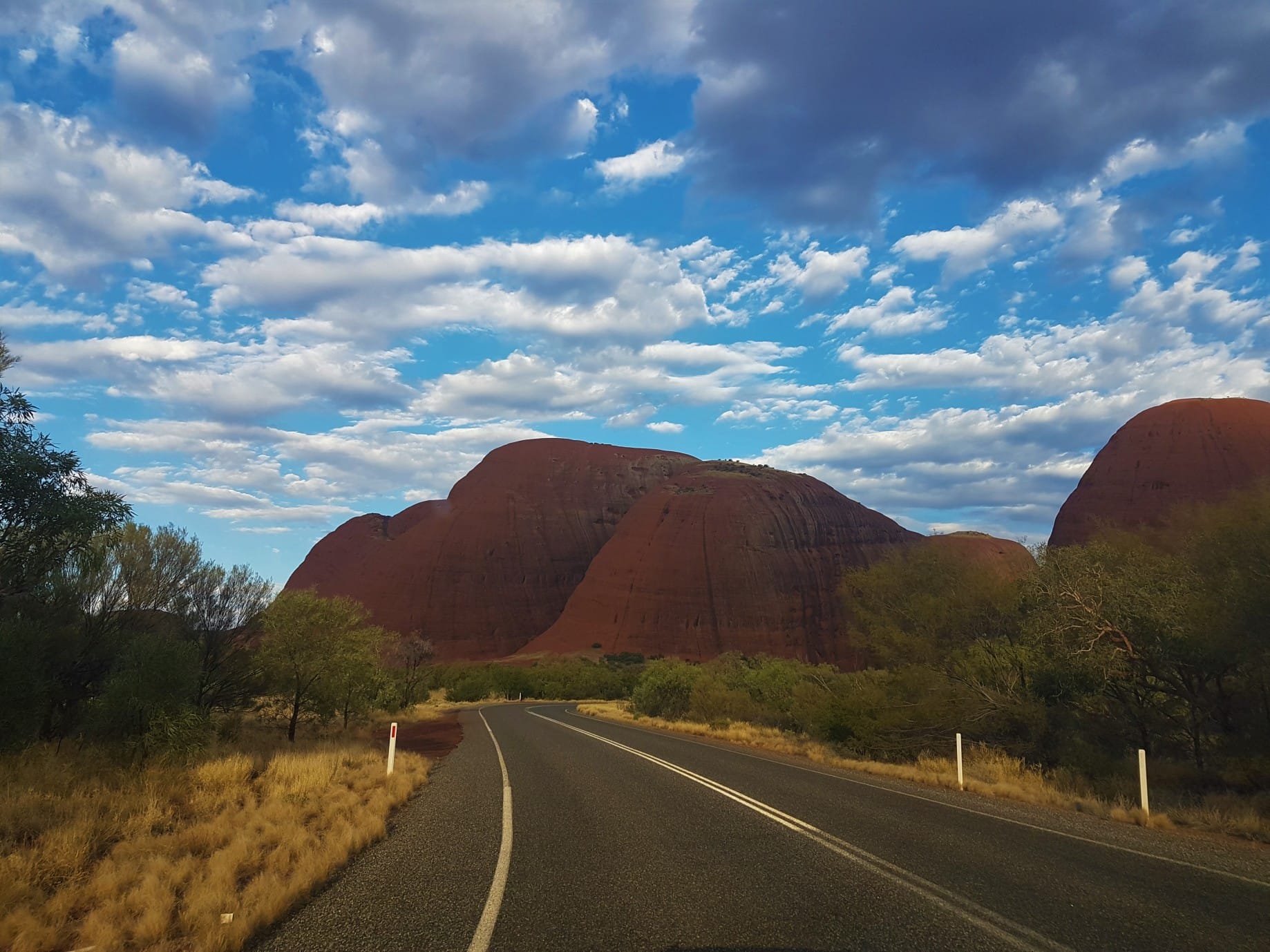
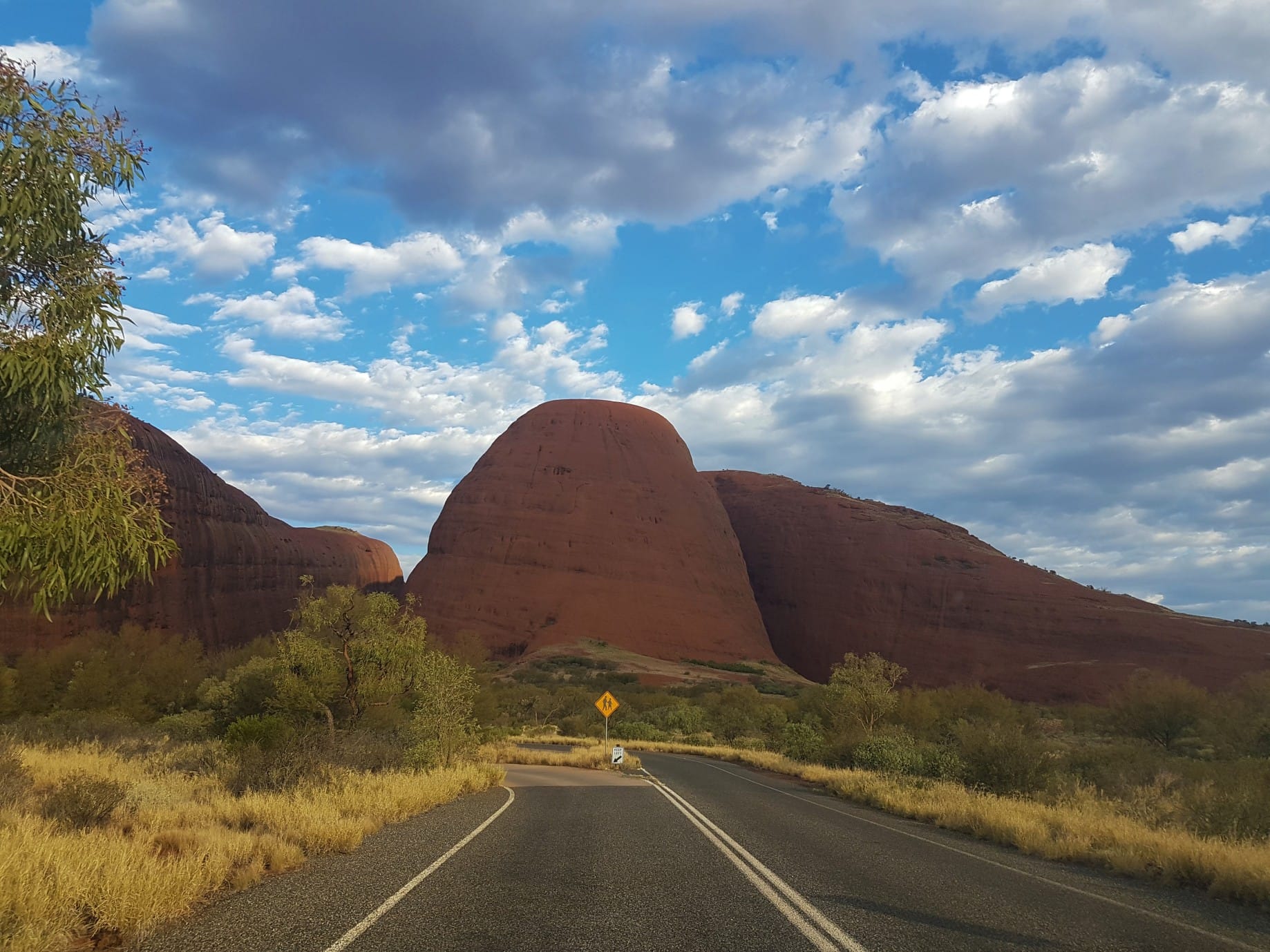
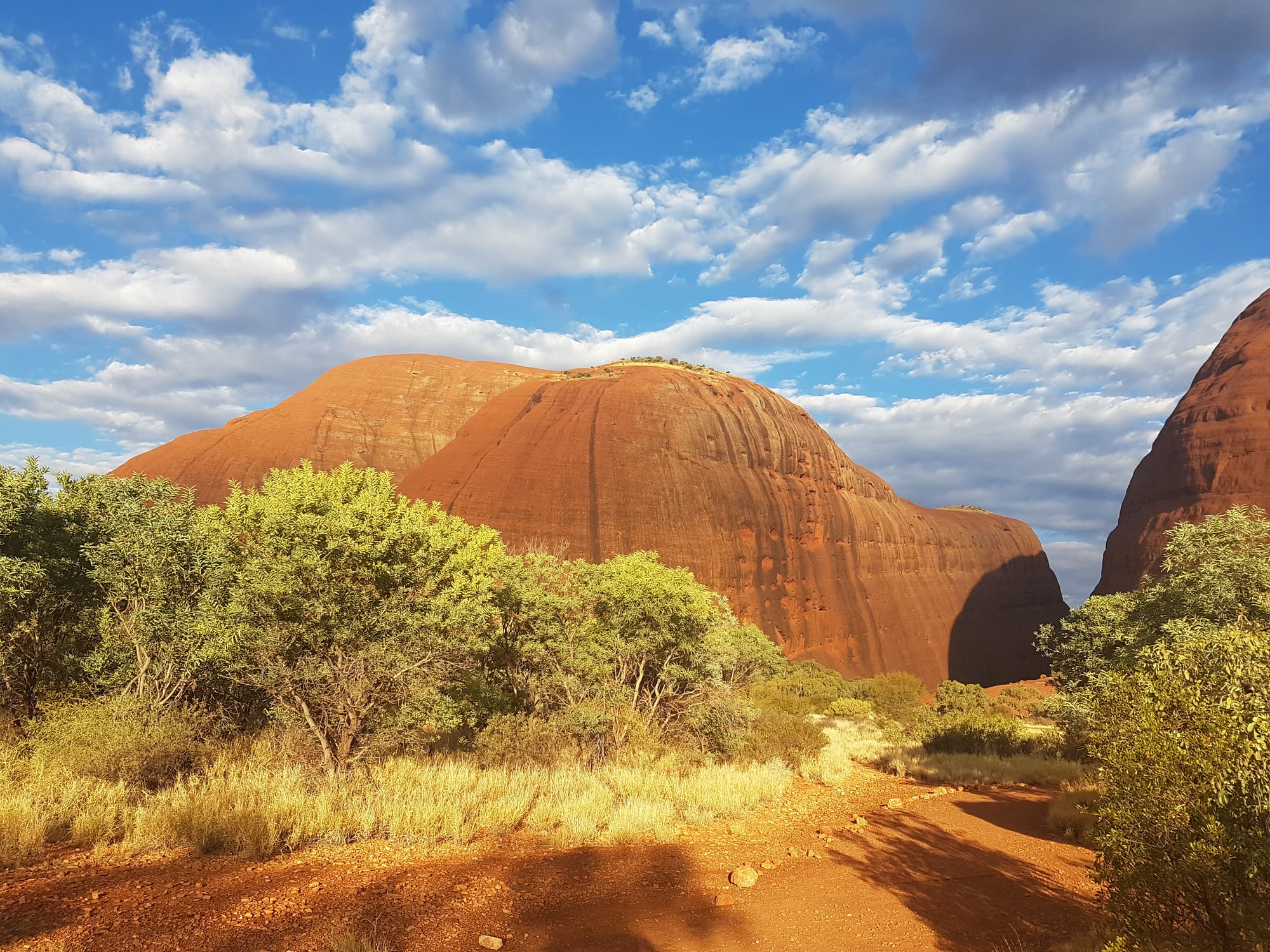
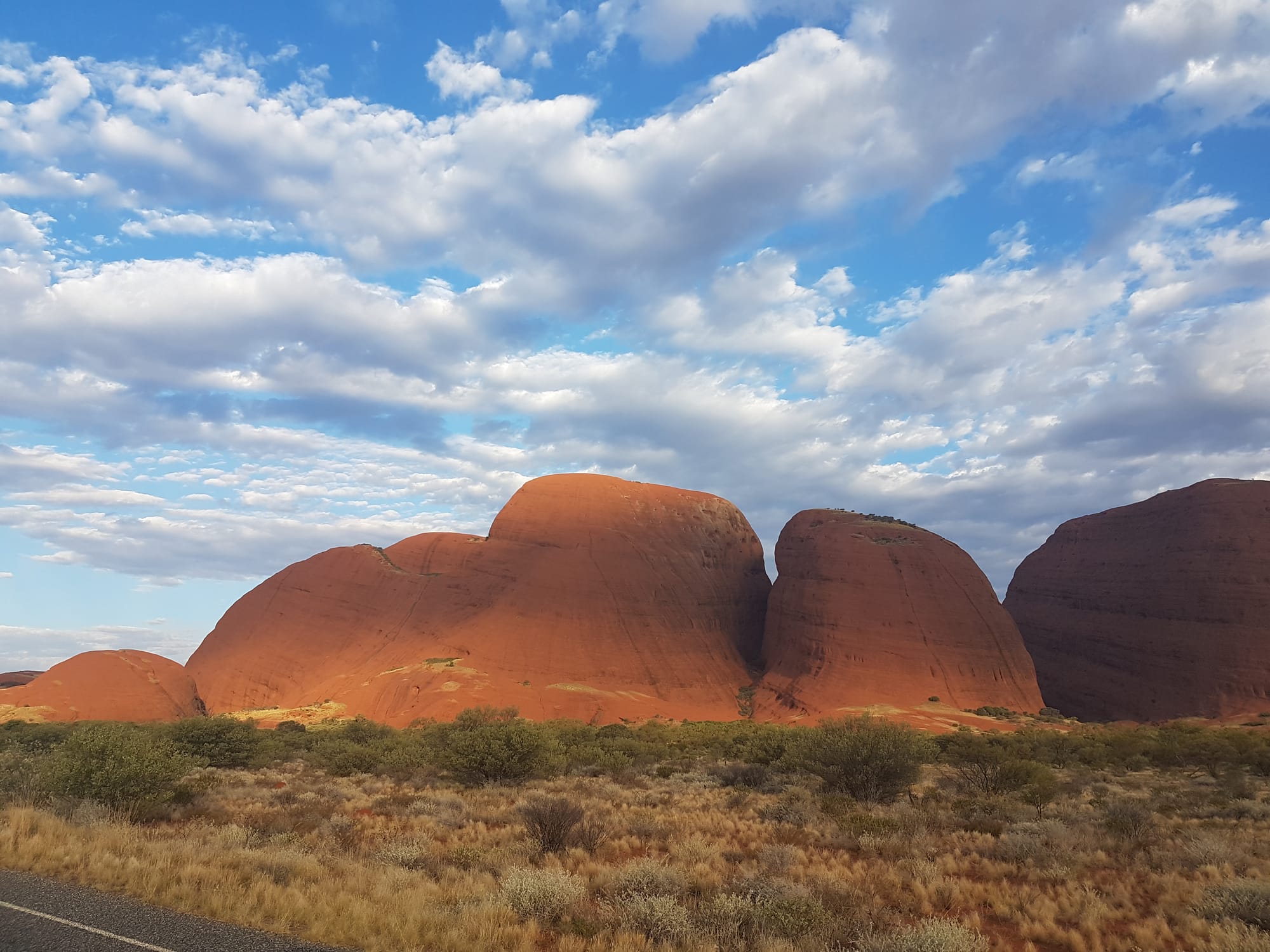
Learn more about Australian Aboriginal people
The Men of the Fifth World” is a documentary that explores the history, culture, and traditions of the Australian aborigines — tribes who inhabit these lands.
Netflix series Tales by Light Season 3 ep 5 and 6 Preserving Indigenous Culture:
Watch Tales by Light | Netflix Official Site
Links:
https://www.aboriginalartstore.com.au/galleries/

